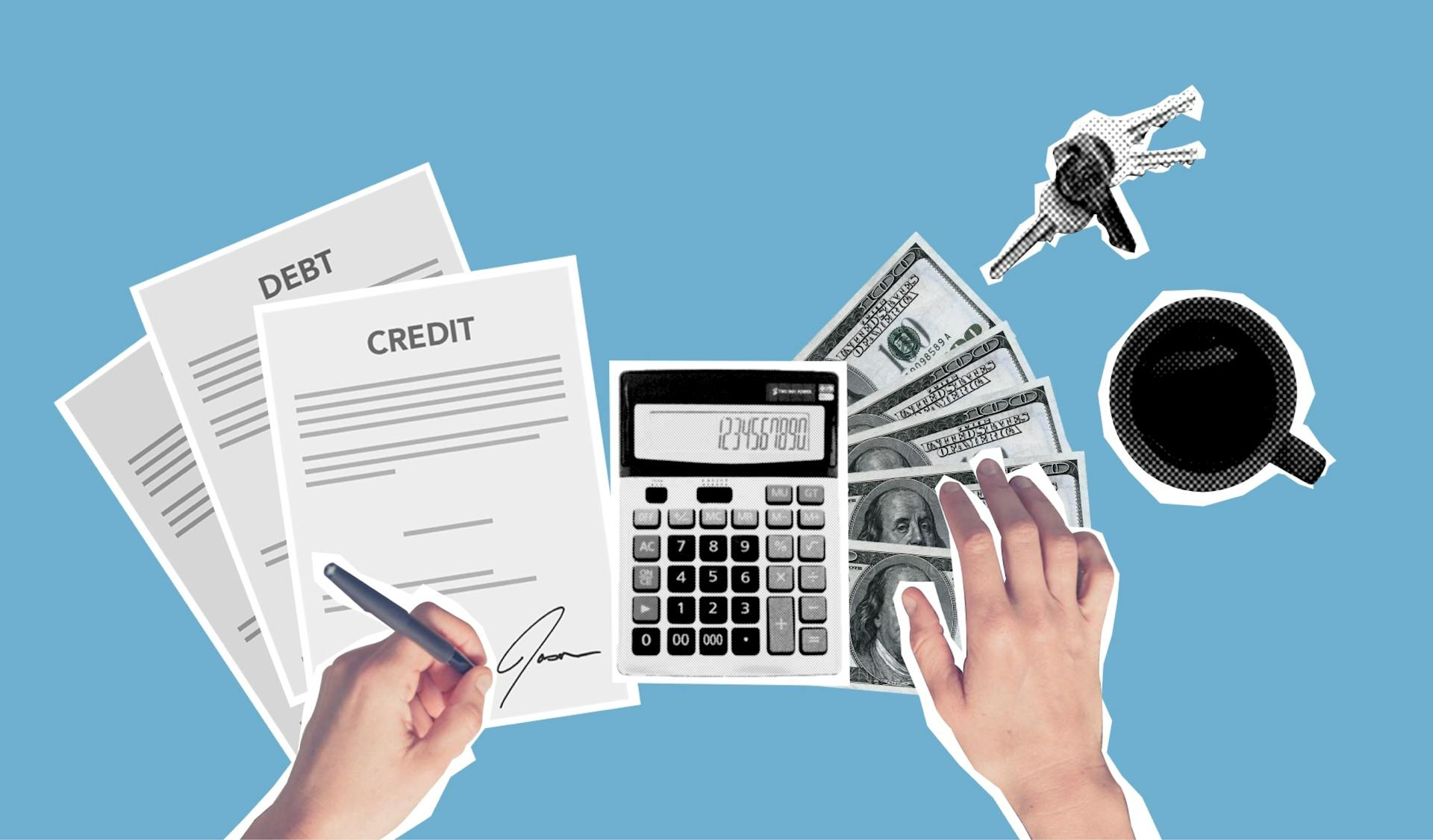
If you're a college student or parent navigating the world of student loans, you're likely familiar with the terms subsidized and unsubsidized loans. A key difference between the two is that subsidized loans don't accrue interest while you're in school.
The government pays the interest on subsidized loans, which can save you money in the long run. For example, if you have a $5,000 subsidized loan, the government will cover the interest, so you won't owe any extra money until after graduation.
Subsidized loans are need-based, meaning they're awarded to students who demonstrate financial need. This is in contrast to unsubsidized loans, which are not need-based and can be awarded to any student, regardless of financial situation.
Unsubsidized loans, on the other hand, are available to all students, regardless of financial need. They can be a good option for students who don't qualify for subsidized loans or need additional funding to cover expenses.
You might like: I Need a Collateral Loan
Types of Federal Aid
There are several types of federal aid available to students, including Direct Subsidized Loans and Direct Unsubsidized Loans.
Direct Subsidized Loans, also known as Stafford Loans, are available to students who qualify for need as determined by the FAFSA. Students must be a U.S. citizen or eligible non-citizen and have a high school diploma or GED.
Direct Unsubsidized Loans, on the other hand, are available to any student, regardless of need. Interest accrues while the student is attending school.
The Perkins Loan is a discontinued federal loan option, and schools can no longer make new Federal Perkins Loans.
Here are the key differences between subsidized and unsubsidized loans:
How Much Can I Borrow?
If you're wondering how much you can borrow, the answer depends on your grade level and dependency status. The maximum amount you can borrow each academic year is determined by federal regulations.
The annual and aggregate (lifetime) borrowing limits vary based on your grade level and dependency status. For example, dependent students can receive no more than $23,000 total in subsidized loans throughout college.
Here's a breakdown of the annual and aggregate limits for subsidized loans:
Annual
Annual loan limits are set for a full academic year, which includes fall, spring, and summer terms. You can't receive more than half of each loan limit per term, up to the annual limit at your academic level.
The limits vary depending on your academic level. Here's a breakdown of the annual loan limits:
Some special cases to keep in mind: if your parents can't get a PLUS Loan, you may be eligible for the Independent undergraduate loan limits. Second Bachelor candidates are treated as Undergraduate students for loan limit purposes.
Borrowing
If you're a student, the amount you can borrow depends on your grade level and dependency status.
The maximum amount you can borrow each academic year is determined by federal regulations, and you can see the annual and aggregate limits in the chart below.
Your school determines the amount you can borrow based on your financial need and the federal loan limits. You may not be eligible to borrow the full annual loan amount because of your expected family contribution or the amount of other financial aid you are receiving.
Readers also liked: Loan Amount
Eligibility Criteria
Eligibility Criteria for Unsubsidized Loans are more lenient than Subsidized Loans. Unlike Subsidized Loans, which are need-based, Unsubsidized Loans are available to all students, regardless of need.
To qualify for an Unsubsidized Loan, you'll need to meet certain requirements. You must be enrolled at least half-time as a regular student at a college or university that is eligible for federal student aid.
Some key requirements include having a high school diploma, GED, or the equivalent, and being a U.S. citizen or permanent resident. You'll also need to be in good academic standing with at least a 2.0 grade point average (GPA) on a 4.0 scale.
Here are some key eligibility requirements for Unsubsidized Loans:
- Be enrolled at least half-time as a regular student
- Have a high school diploma, GED, or the equivalent
- Be a U.S. citizen or permanent resident
- Be in good academic standing with at least a 2.0 GPA
- Not be in default on a previous student loan
Annual for Direct
Annual loan limits for Direct loans are capped, and you can't receive more than half of each limit per term, up to the annual limit at your academic level.
Dependent students have different loan limits than independent students, and these limits vary based on their academic level, ranging from freshman to graduate and professional students.

Here are the loan limits for dependent students:
Independent students also have different loan limits, which can be higher than those for dependent students.
Some important notes about loan limits: dependent students whose parents can't borrow PLUS Loans can apply for independent undergraduate loan limits, and second Bachelor candidates are treated as undergraduate students for loan limit purposes.
To Receive Your
To receive your subsidized or unsubsidized loan, you'll need to follow these steps. First, visit ONE.UF at http://one.uf.edu and select “Login with Gatorlink” with your Gatorlink username and password.
Scroll to the “Financial Aid” section and select the correct award year under “View Your Summary.” Then, scroll to Federal Direct Subsidized or Unsubsidized Loans in your aid summary and use the “Take Action” button to accept, reduce, or decline the loan. Students should only borrow what they need.
To complete the process, you'll need to complete two more steps: Entrance Counseling using StudentAid.gov, and a Master Promissory Note (MPN) also using StudentAid.gov.
Take a look at this: Unsubsidized Loan Application
Benefits
The benefits of unsubsidized loans are numerous, and one of the main advantages is that they're available to a wider range of students, unlike subsidized loans which are awarded based on financial need.
Subsidized loans have a more limited availability, so if you don't qualify for need-based loans, unsubsidized loans are a great alternative.
Unsubsidized loans generally allow higher loan amounts, which means you can borrow more money if needed, giving you more flexibility to cover your education expenses.
One thing to keep in mind is that unsubsidized loans don't have the same interest subsidy as subsidized loans, so you'll be responsible for paying the interest on your loan from the time it's disbursed.
However, the interest on unsubsidized loans can still be manageable if you make timely payments, and the Department of Education will pay the remaining charges if your monthly payments don't cover all your accrued interest.
Drawbacks of Student Loans
Subsidized loans have their limitations, and not all students qualify for them. The amount you can borrow per academic year is limited, so even if you qualify, a subsidized loan might not cover all your college expenses.
You'll still need to pay back a subsidized loan in full, with interest starting to accrue once you're in repayment. This means you must be comfortable taking on debt that could last for years.
Unsubsidized loans are more expensive than subsidized loans, and you're responsible for paying the interest from day one. This can lead to a higher total amount you'll need to pay back in the long run.
The interest on an unsubsidized loan accumulates even before you enter repayment, so be careful about how much you borrow.
On a similar theme: Samsung Wallet vs Google Wallet
How Interest Accumulation Works
Interest accumulation can be a significant burden for students taking out loans. Interest is like a fee you're charged for borrowing money, and it accrues daily.
If you take out an unsubsidized loan, you'll be charged interest on the principal balance from the moment you borrow the money. This means you'll be looking at a principal balance of $8,000 plus over $1,000 in capitalized interest if you don't make payments during school or your grace period.
Worth a look: Federal Direct Subsidized Loan Rate
Subsidized loans, on the other hand, have the government paying the interest while you're in school and during your grace period. This means you wouldn't have to worry about another $1,000 in interest.
One thousand dollars in interest might not sound too bad, but it's a lot for just $8,000 worth of loans. Many students need to borrow much more than just $2,000 per year.
Strategies for Students
Subsidized student loans are less expensive than unsubsidized student loans, so you should always accept subsidized student loans first before considering unsubsidized loans.
If you're eligible for a subsidized loan, it's worth noting that the total loan limit for the entire education is $23,000.
To responsibly manage your student loans, it's essential to understand the differences between subsidized and unsubsidized loans. Here's a comparison:
Remember, an unsubsidized loan of the same amount as a subsidized loan will cost you more in the long run, as you'll be responsible for paying more in interest.
What to Expect
When you're considering taking out a loan for college, it's essential to understand the differences between unsubsidized and subsidized loans.
Unsubsidized loans have no restrictions on how the money can be used, and borrowers are responsible for paying the interest on the loan, even while they're in school.
The interest on unsubsidized loans is not capped, which means it can add up quickly, making it more challenging to pay off the loan after graduation.
Subsidized loans, on the other hand, are need-based and have a fixed interest rate, which is currently 4.53% for undergraduate students.
Borrowers with subsidized loans don't have to pay interest while they're in school, which can save them a significant amount of money in the long run.
However, subsidized loans are limited to 150% of the student's expected family contribution, and the interest rate for graduate students is higher at 6.08%.
The loan limits for unsubsidized loans are higher, with a maximum of $12,500 per year for undergraduate students, and $20,500 per year for graduate students.
Borrowers with unsubsidized loans are required to start making payments six months after graduation, while borrowers with subsidized loans can delay payments for up to nine months after leaving school.
Decisions
It's best to accept subsidized loans first because there won't be as much interest to repay them as unsubsidized loans.
Subsidized loans are often a better option because they don't accrue interest while you're in school.
Accepting only what you need to attend school is a good rule of thumb to avoid taking on too much debt.
You should try to find ways to pay for the rest of your expenses to minimize your reliance on loans.
It's essential to be mindful of your financial situation and make informed decisions about your borrowing.
Frequently Asked Questions
Do you have to pay back an unsubsidized loan?
Yes, you are responsible for paying back an unsubsidized loan, including the interest that accrues from the time it's disbursed. You can choose to pay the interest as you go or allow it to be added to the principal amount.
What are the disadvantages of an unsubsidized student loan?
Unsubsidized student loans are more expensive than subsidized loans, with interest charged from the start. This makes them a more costly borrowing option, but not the worst in terms of pure cost.
Do I have to pay interest on unsubsidized loans while in school?
Yes, you're responsible for paying interest on unsubsidized loans while you're in school. Learn about the differences between subsidized and unsubsidized loans to understand your repayment options.
Do you pay back subsidized and unsubsidized loans?
You don't pay back subsidized and unsubsidized loans immediately after graduation, but rather after a 6-month grace period. During this time, you'll have a chance to prepare for regular payments on these federal student loans.
What is the difference between a Stafford subsidized loan and a Stafford unsubsidized loan new employee experience?
Stafford subsidized loans have the government paying interest while in college, whereas unsubsidized loans require students to pay all interest, which starts accruing immediately
Sources
Featured Images: pexels.com


